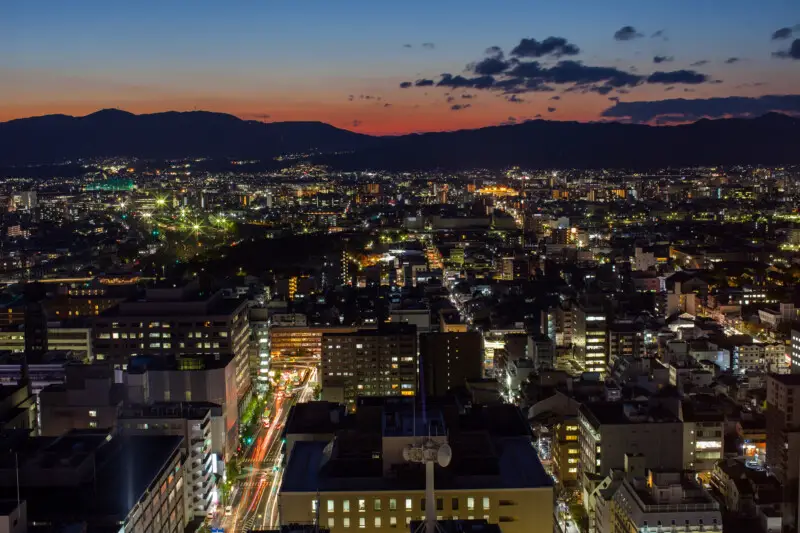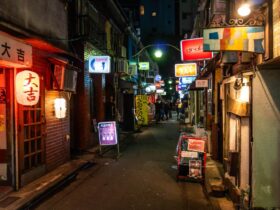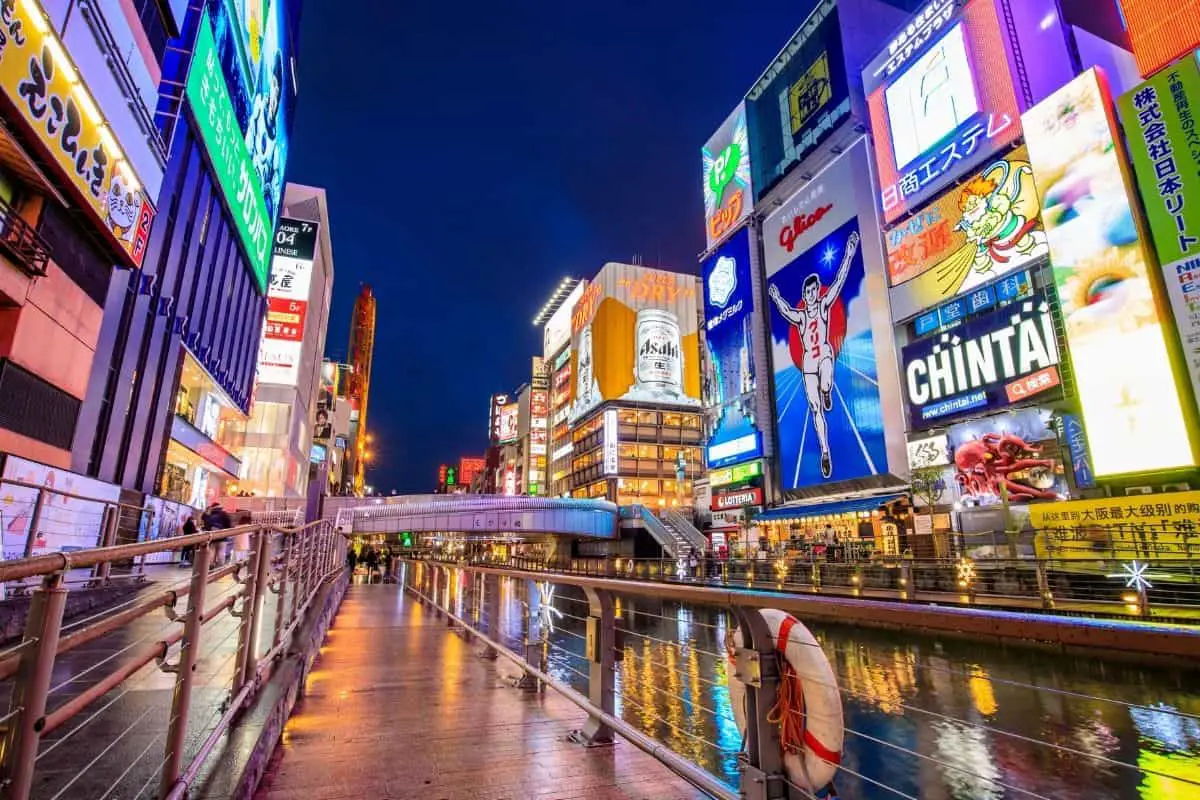Kyoto, the former imperial capital of Japan, is a city that is steeped in history and culture. While it is a popular tourist destination for its historic temples and shrines, its beautiful gardens, and the traditional wooden streets of Gion, it is also a great place to explore at night.
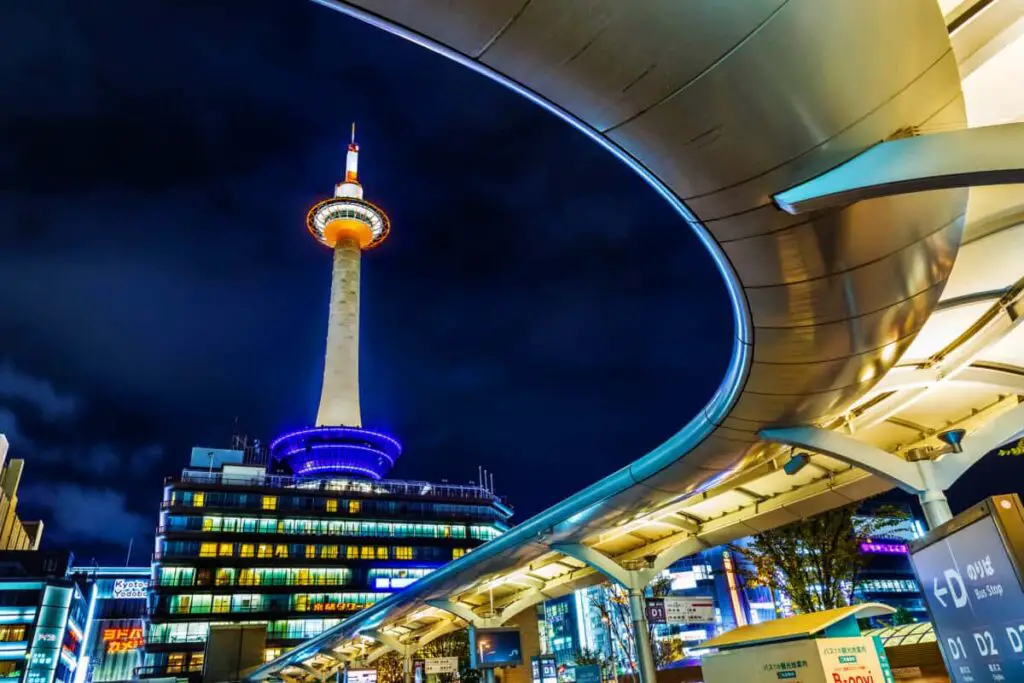
The city takes on a whole new character after dark, and there are plenty of things to see and do. In this blog post, we will be exploring some of the best places to visit and things to do in Kyoto at night.
Yasaka Shrine
One of the most famous and popular spots to visit in Kyoto at night is the Yasaka Shrine. This Shinto shrine, also known as Gion Shrine, is located in the Gion district and is a short walk from the Kamogawa River.
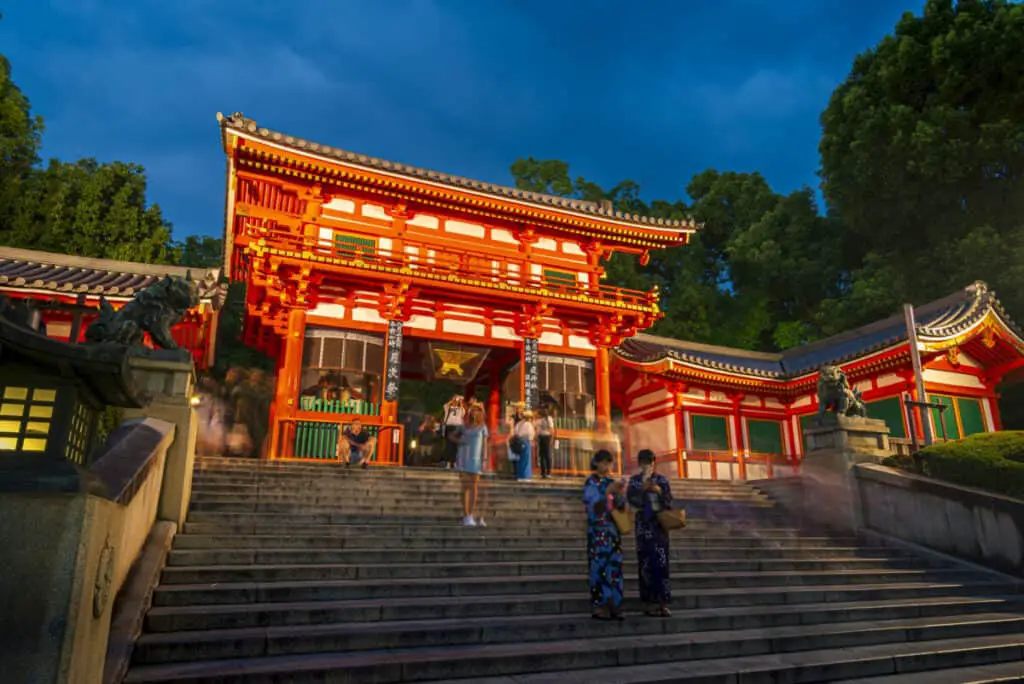
The shrine is beautiful during the day, but it takes on a whole new character at night when it is illuminated by blue lights.
The blue lights create a serene and otherworldly atmosphere that is perfect for taking photos or just enjoying the peaceful surroundings.
Observation Deck at Kyoto Station Building
Another great spot to see the city at night is the observation deck at the Kyoto Station Building. This modern building is an interesting contrast to the traditional architecture of Kyoto, and it offers a great view of the city from above.
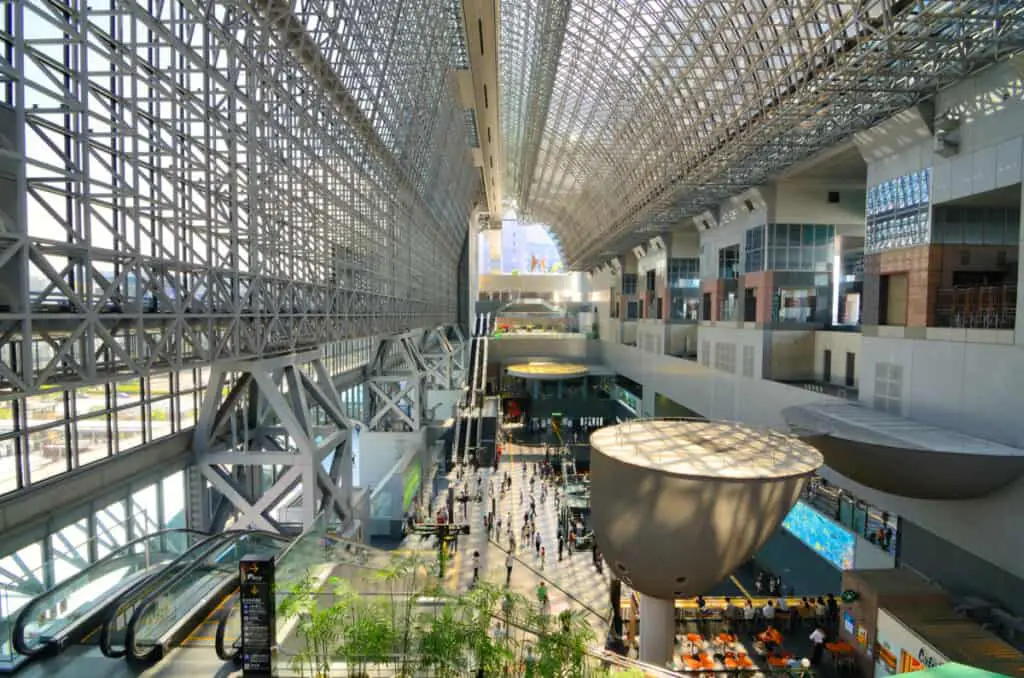
The observation deck is located on the 15th floor and is open until 9 pm. The view from the deck is especially beautiful during the autumn season when the cherry trees change color.
Hanamikoji Street
If you are looking for a traditional Kyoto experience, Hanamikoji Street is a must-visit. This narrow street is lined with traditional wooden buildings and is home to many traditional Japanese restaurants and izakayas.
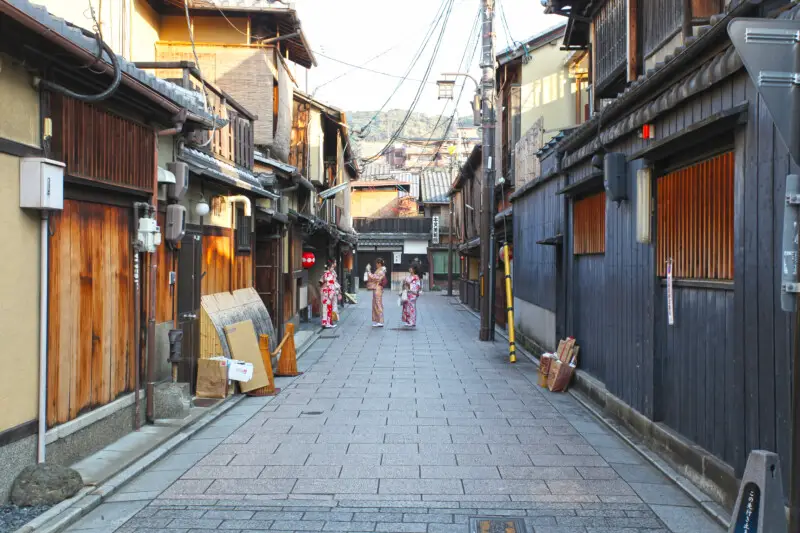
The street is especially beautiful at night when the buildings are illuminated by lanterns. It is also a great spot for people-watching and observing the traditional architecture of the city.
Kodaiji Temple
Kodaiji Temple is one of the most popular temples in Kyoto and is especially beautiful at night. The temple’s main hall is illuminated, as is the rock garden, creating a serene and peaceful atmosphere.
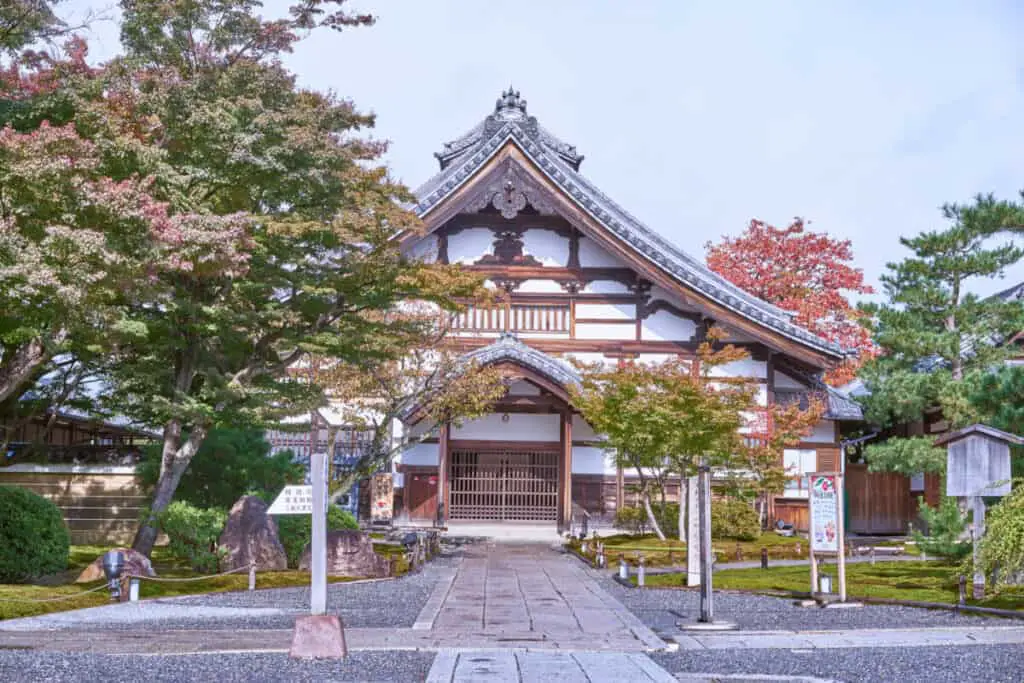
The temple grounds are also a great spot to explore at night, as the narrow alleys and winding paths take on a mysterious and otherworldly feel.
Gion Shinto Shrine
Another great shrine to visit at night is the Gion Shinto Shrine, which is located near Gion Shijo Station.
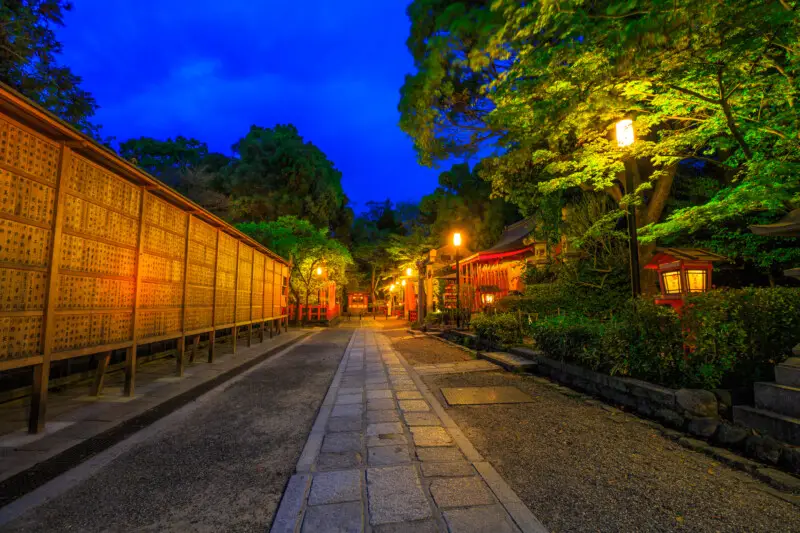
This shrine is especially beautiful during the autumn season when the trees around the shrine change color.
The shrine is also a great spot to see traditional Japanese architecture and to experience the peaceful atmosphere of a Shinto shrine.
Public Baths
One of the most traditional Japanese experiences is visiting a public bath (sento) or onsen. Many of these baths are open until late at night and are a great way to relax and unwind after a long day of sightseeing.
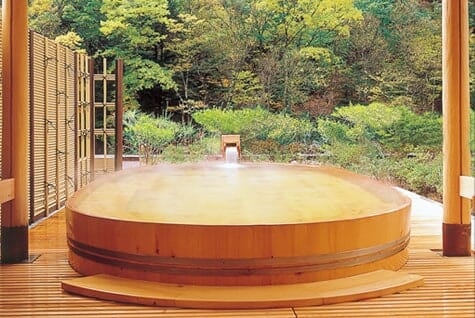
Some popular public baths in Kyoto include Funaoka Onsen, Goko-yu, and Arashiyama Onsen.
These public baths are especially popular with locals and are a great way to experience traditional Japanese culture.
Kyoto Night Foodie Tour
If you are looking for a more guided experience, a Kyoto night foodie tour is a great option. These tours are led by local tour guides who take you to some of their favorite places to eat and drink in the city.
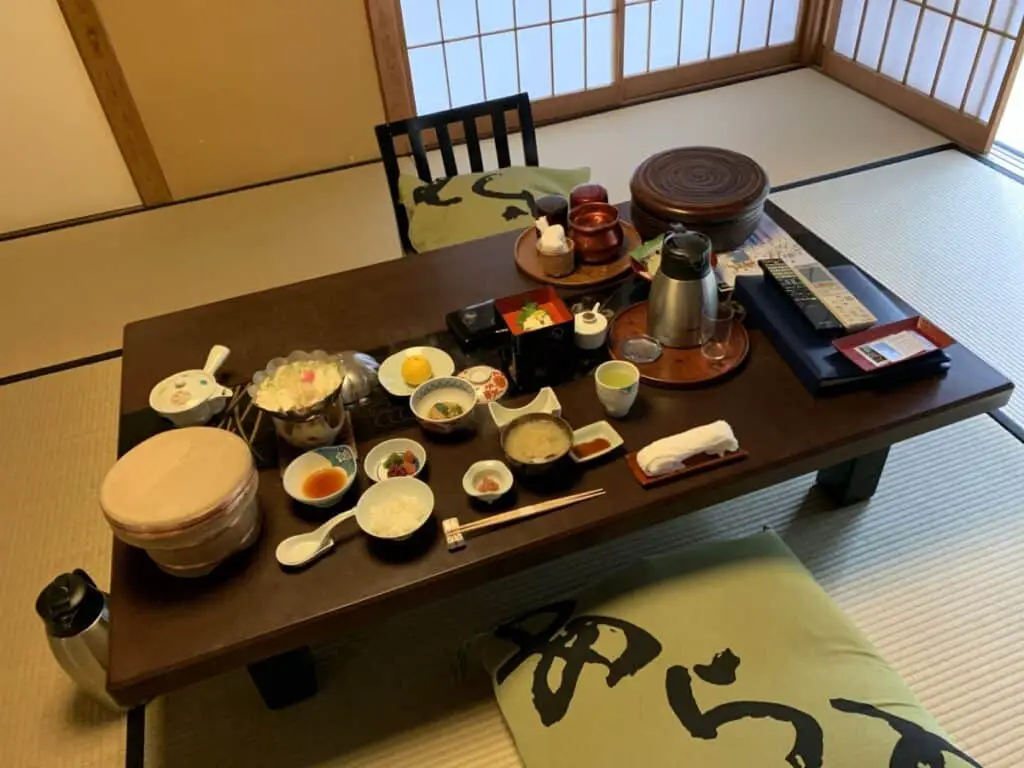
You can try traditional Kyoto dishes like tofu, kaiseki, and Japanese sake, and learn more about the history and culture of the city.
Arashiyama Area
The Arashiyama area is another great spot to visit at night. This area is known for its beautiful bamboo forest, which is illuminated at night, creating a serene and otherworldly atmosphere.
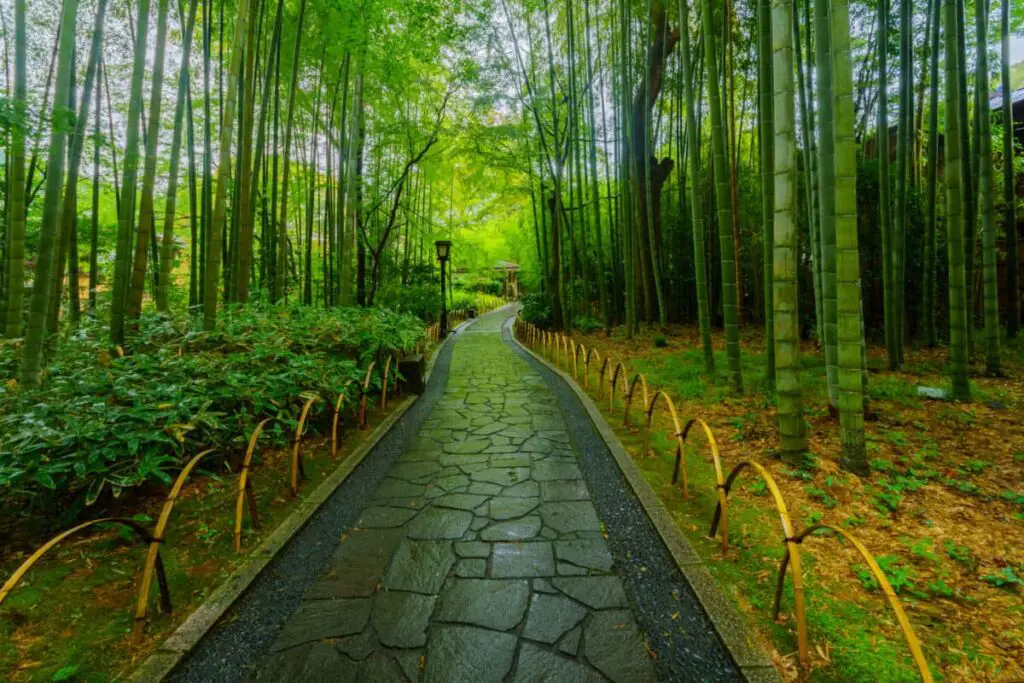
The Togetsukyo Bridge, which spans the Katsura River, is also illuminated at night and offers a great view of the surrounding area.
The area is also home to many traditional Japanese inns, or ryokans, which offer a great way to experience traditional Japanese hospitality.
Kamogawa River
The Kamogawa River is a great spot to visit at night, especially during the summer months. The riverbanks are lined with cherry trees, and there are many restaurants and bars that offer outdoor seating with a view of the river.
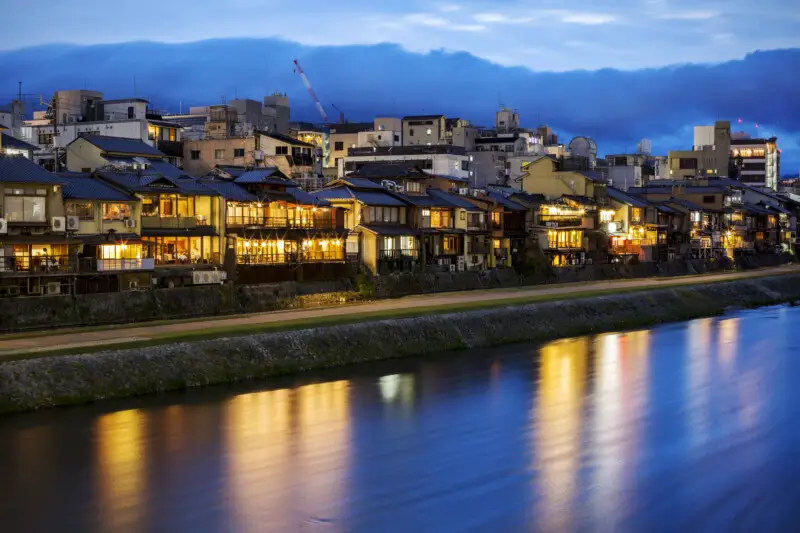
It is a great spot to enjoy good food, drinks, and company while taking in the beautiful views of the city.
Shijo-dori Street
Shijo-dori Street is one of the main shopping streets in Kyoto and is especially beautiful at night when the tall buildings are illuminated.
The street is home to many traditional Japanese shops, as well as modern boutiques and department stores.
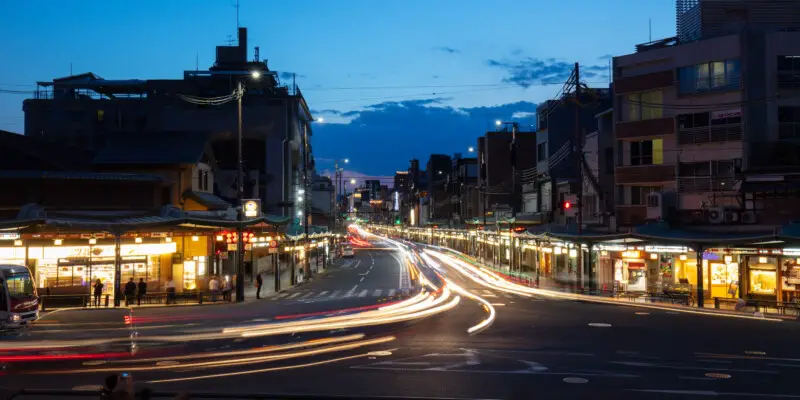
It is a great spot to do some shopping or just enjoy the bustling atmosphere of the city at night.
Traditional Food
One of the best things about Kyoto at night is the food. The city is known for its traditional cuisine, and there are many restaurants and izakayas that offer traditional dishes like kaiseki, tofu, and yakitori.
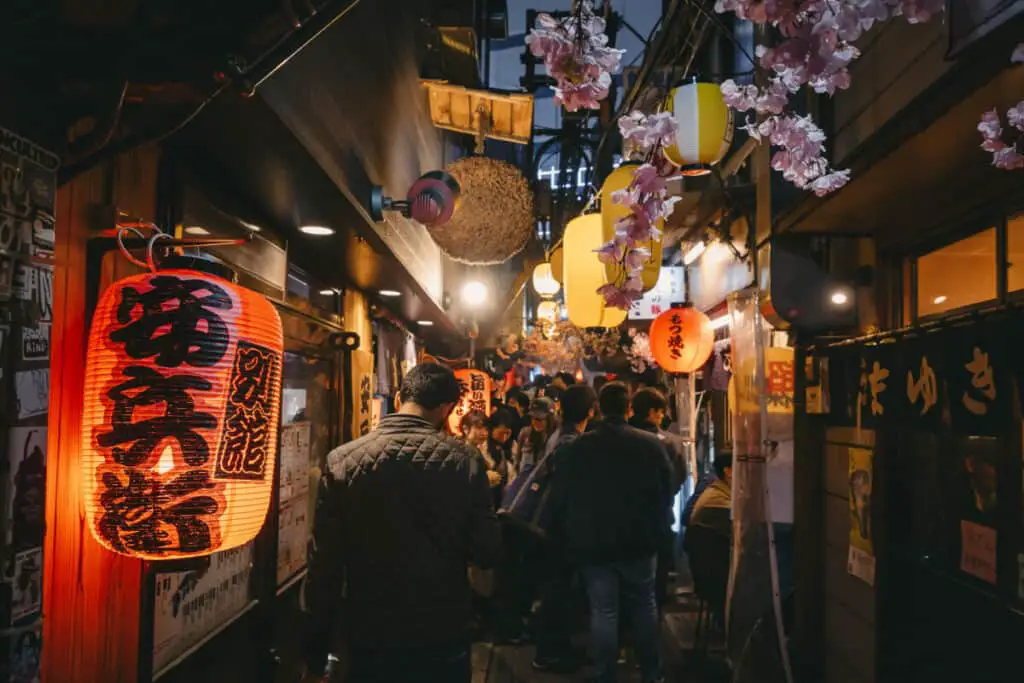
One of the most popular areas for food in Kyoto is Pontocho, a narrow street that is home to many traditional restaurants and izakayas.
Kyoto Hotels
Kyoto is home to many great hotels, and many of them offer a great way to experience traditional Japanese hospitality. From modern luxury hotels to traditional ryokans, there is something for everyone in Kyoto.
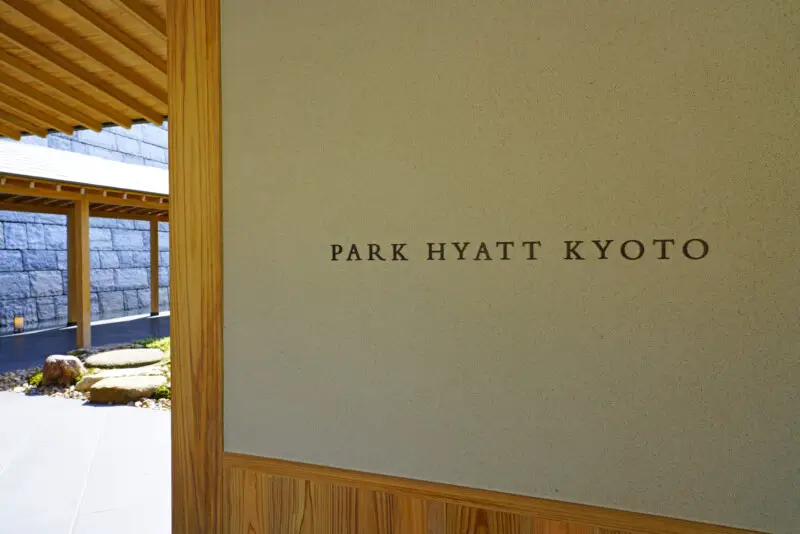
Best Hotels in Kyoto Via Tripadvisor
Many of the hotels are also located in the heart of the city, making it easy to explore the city at night.
Private Tours
If you prefer a more private experience, a private tour is a great option. Many tour companies offer private tours of Kyoto at night, where you can explore the city with a knowledgeable tour guide.
This is a great way to learn more about the history and culture of the city and to see some of the best spots at night.
Best Time To Explore
The best time to explore Kyoto at night depends on what you want to see and do. Many of the temples and shrines are open until late at night, and the illumination events usually take place in the evening.
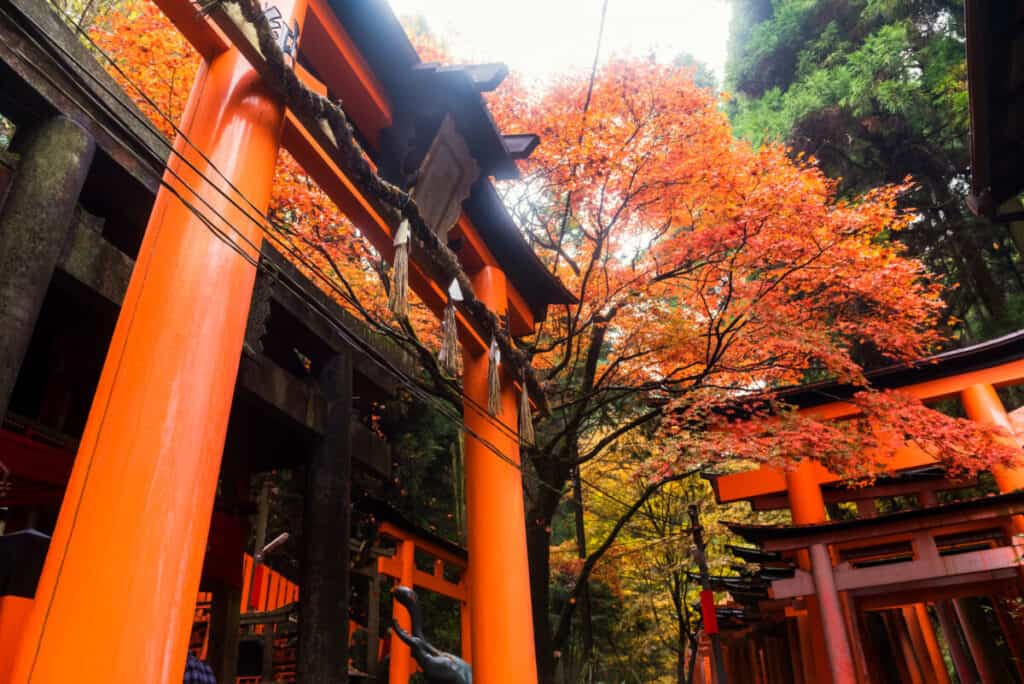
If you want to experience the cherry blossoms or autumn foliage, the best time to visit is during the spring or autumn season.
Our Favorite Places
Some of the favorite places to visit in Kyoto at night include the Yasaka Shrine, Hanamikoji Street, Kodaiji Temple, and the Arashiyama area.
These spots offer a great way to experience traditional Japanese culture and to see the city in a different light.
Visitors From The United States and English speaking countries
For visitors from the United States, Kyoto is a great destination to explore at night. The city is safe and easy to navigate, and there are many English-speaking tour guides and staff at hotels and restaurants.
Local Foods
One of the best ways to experience Kyoto at night is through its food. There are many traditional Japanese dishes to try, as well as local Kyoto specialties like obanzai, a type of Kyoto-style home cooking.
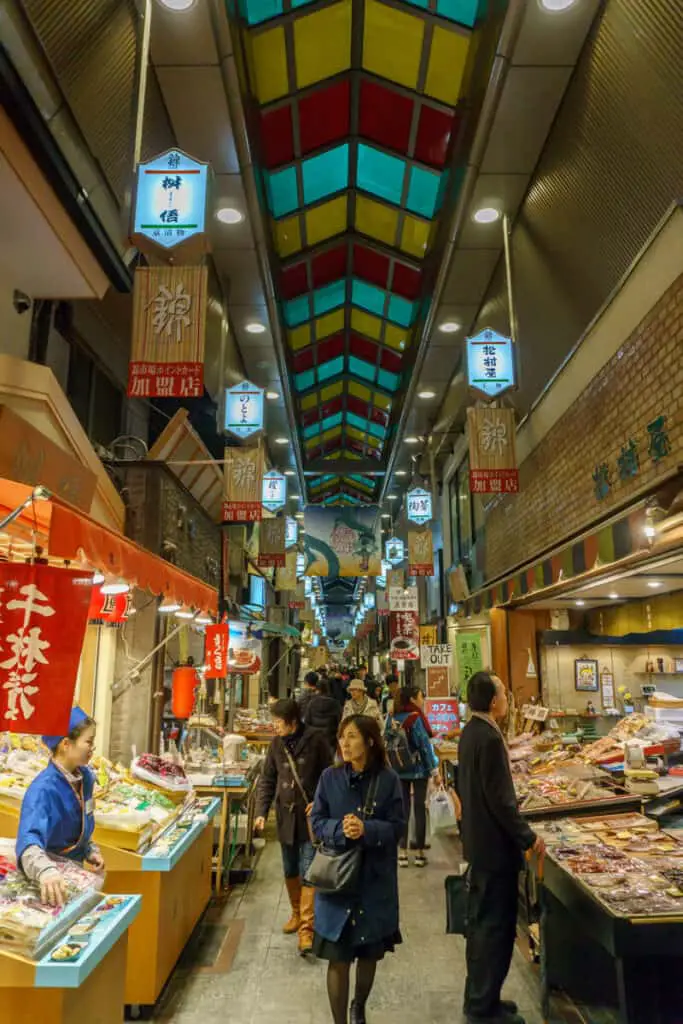
Some of the best places to try local food in Kyoto include Nishiki Market and Pontocho.
Kyoto’s Main Station
The train station in Kyoto is another great spot to visit at night. The station building is a modern architectural marvel and is illuminated at night, creating a futuristic and otherworldly atmosphere.
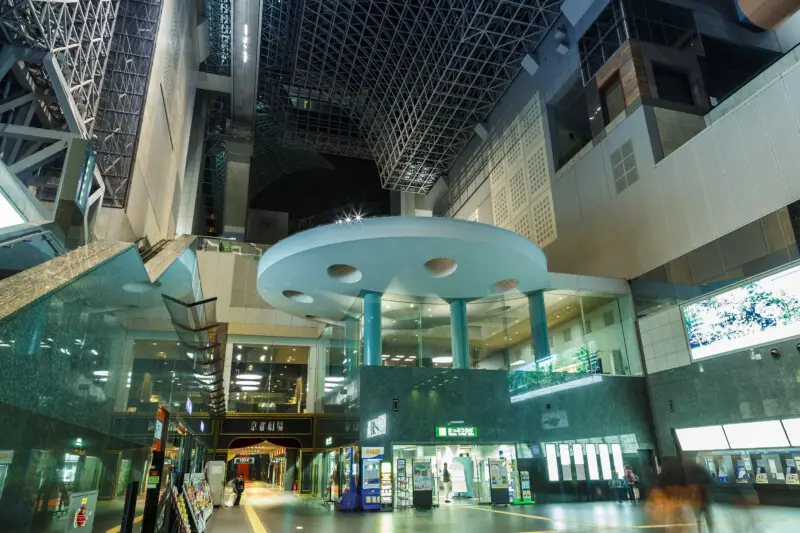
The station is also a great spot to catch a train to other destinations in Japan.
Kyoto’s Traditional Japanese Inns
For a truly immersive experience, staying at a traditional Japanese inn, or ryokan, is a must. Ryokans offer a unique and authentic way to experience traditional Japanese hospitality, with features like tatami mats, futons, and public baths.
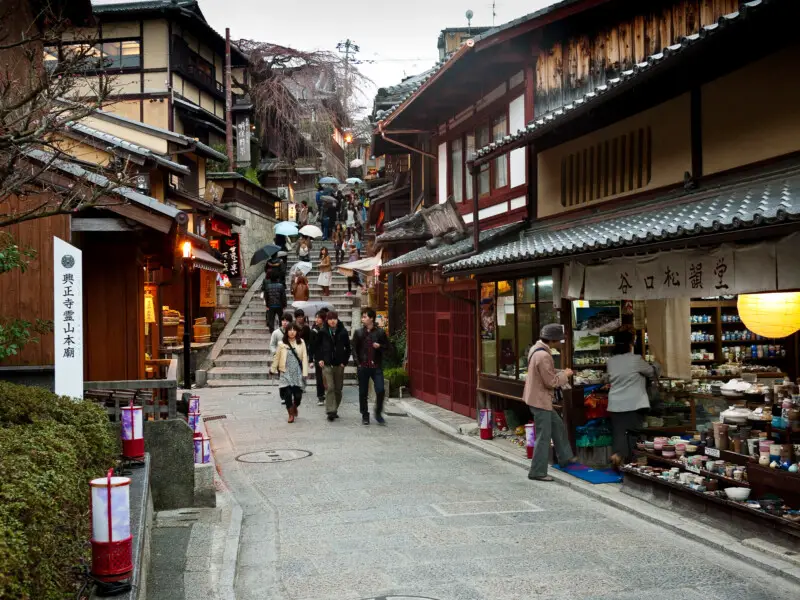
Many ryokans are also located in historic areas of the city, offering a glimpse into the past.
Temples after dark
Kyoto has a long history and is one of the most culturally rich cities in Japan. The city has been the capital of Japan for over a thousand years, and many of the temples and shrines date back to that time.
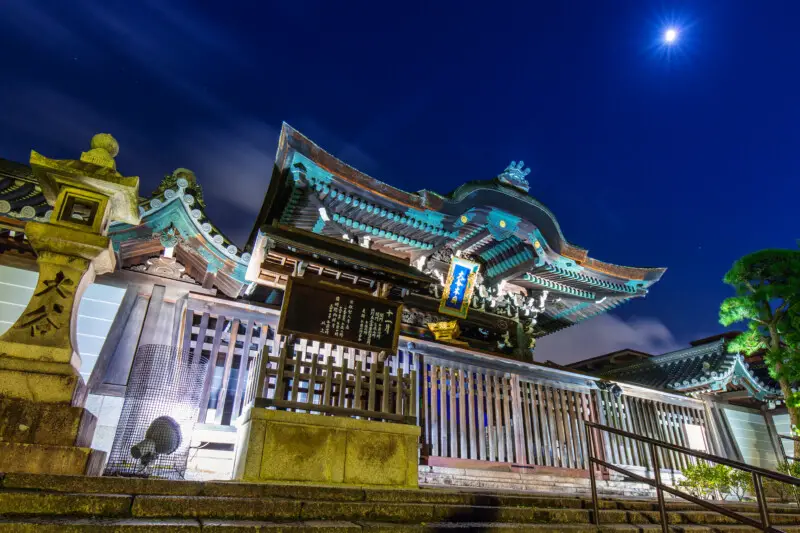
The long history of the city is evident in the many historic buildings and cultural traditions that can be seen and experienced in Kyoto at night.
Gion Shijo Station
Gion Shijo Station is another great spot to visit at night. The station is located in the heart of the historic Gion district, and the surrounding area is filled with narrow streets, traditional restaurants, and historic buildings.
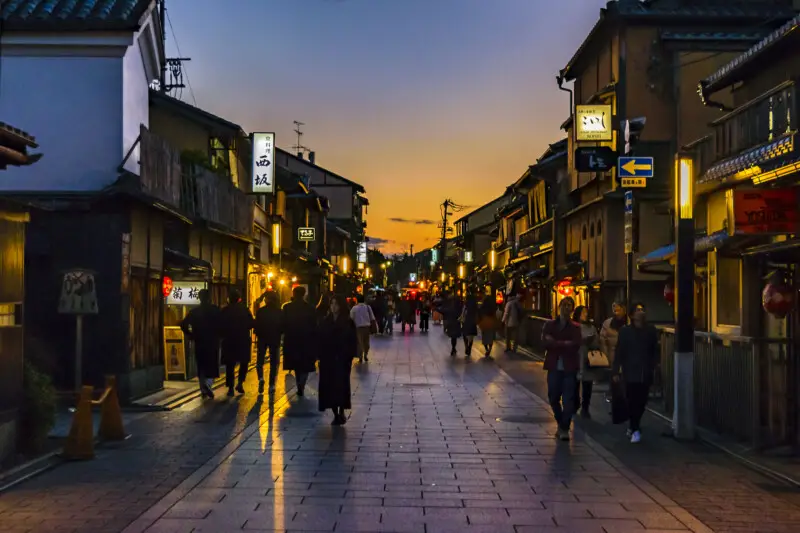
The station is also a great spot to catch a train to other destinations in the city.
Temple Grounds
Many of the temples and shrines in Kyoto are open late into the night, allowing visitors to explore the temple grounds in a different atmosphere.
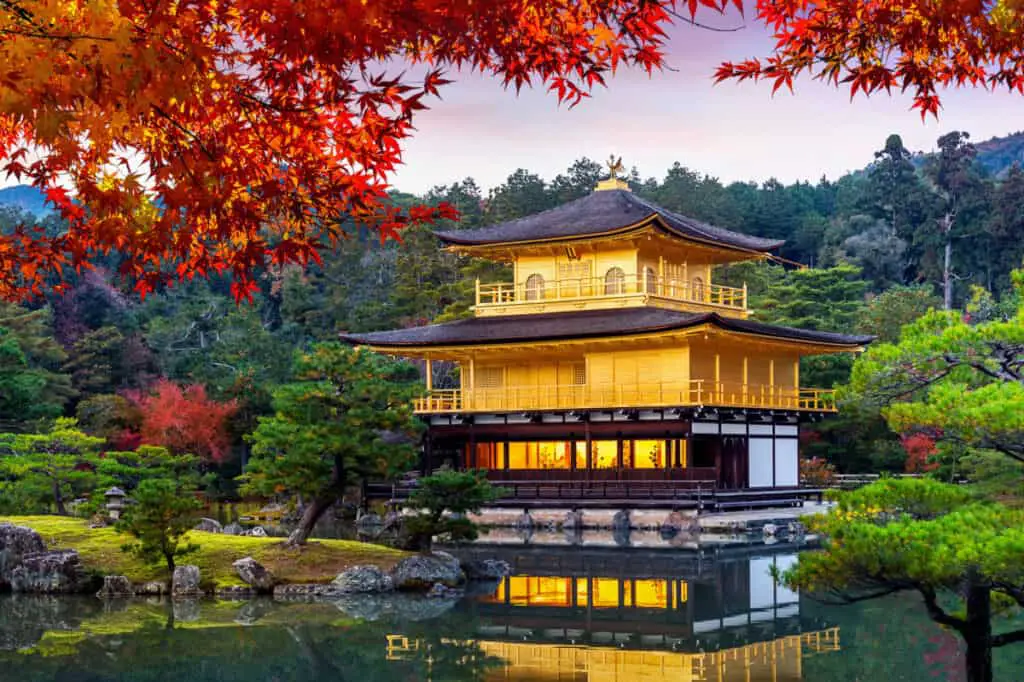
The illumination events at some of the temples and shrines create a magical and otherworldly atmosphere, offering a unique and unforgettable experience.
Youth Culture
Kyoto is a popular destination for young people in Japan, and there are many spots in the city that cater to a younger crowd. The streets of Gion are a popular spot for young people, with many bars and clubs that offer a lively atmosphere at night.
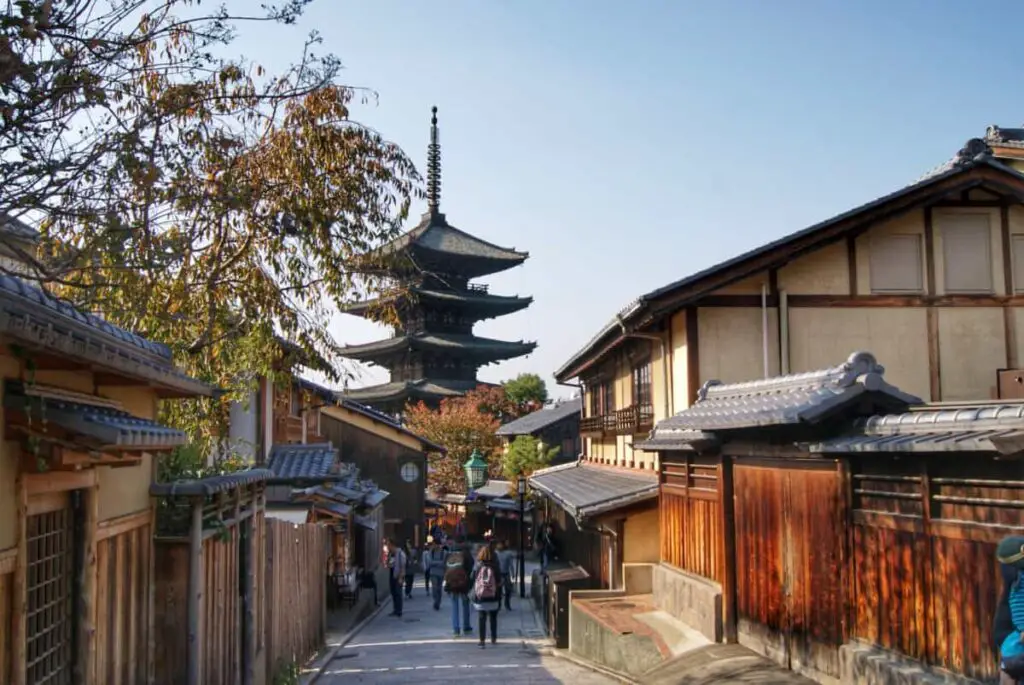
In conclusion, Kyoto at night offers a unique and unforgettable experience that should not be missed. From the historic temples and shrines to the bustling streets and modern architecture, there is something for everyone in Kyoto at night.
Whether you want to explore the city’s cultural heritage, enjoy the local food, or just take in the beautiful night views, Kyoto is a great destination for any traveler.
With its many popular spots, short walks, and great experiences, Kyoto at night is truly a must-see destination in Japan.
Fees And Cost Associated With Each Location
Yasaka Shrine – No admission fee
Hanamikoji Street – No admission fee
Kodaiji Temple – Admission fee: 900 yen
Observation deck at Kyoto Station Building – No admission fee
Kamogawa River – No admission fee
Public Baths – Admission fee varies depending on the location
Shinto Shrine – Admission fee may vary depending on the location
Shijo-dori Street – No admission fee
Gion District – No admission fee
Traditional Japanese Inns (Ryokans) – Fee varies depending on the location
Private Tours – Fee varies depending on the service and duration of the tour
Keage Station – No admission fee
Arashiyama Area – No admission fee
Traditional Izakaya – No admission fee, prices for food and drink vary
Train Station – No admission fee
Temple’s Main Hall – Admission fee varies depending on the location
Streets of Gion – No admission fee
Local Food Markets – No admission fee, prices for food and drink vary
Kyoto Night Foodie Tour – Fee varies depending on the tour operator and duration of the tour
Directions To Each Location And The Best Way to Reach Each One
Yasaka Shrine – Located in the Gion District, the easiest way to get there is to take the city bus number 206 from Kyoto Station to Gion bus stop. From there, it’s a short walk to the shrine.
Hanamikoji Street – Also located in the Gion District, it’s a short distance from Yasaka Shrine. You can take the city bus number 206 from Kyoto Station to Gion bus stop and walk from there.
Kodaiji Temple – Take the city bus number 206 from Kyoto Station to Higashiyama Yasui bus stop. From there, it’s a 10-minute walk to the temple.
Observation deck at Kyoto Station Building – Located at the top of Kyoto Station, you can take the escalator or elevator to the 15th floor for free.
Kamogawa River – The river runs through the center of Kyoto, and there are several bridges where you can view the river. The most popular one is the Sanjo Bridge, which is a short walk from Gion.
Public Baths – There are many public baths in Kyoto, but some of the most popular ones include Funaoka Onsen and Kurama Onsen. You can take the city bus or train to get to these locations.
Shinto Shrines – Kyoto has many Shinto shrines, including Fushimi Inari Taisha, Yasaka Shrine, and Heian Jingu Shrine. You can take the city bus or train to get to these locations.
Shijo-dori Street – Located in the center of Kyoto, Shijo-dori is easy to access from Kyoto Station. You can take the city bus or train to Shijo-Kawaramachi Station.
Gion District – Gion is located in the center of Kyoto and is easy to access from Kyoto Station. You can take the city bus or train to Gion-Shijo Station.
Traditional Japanese Inns (Ryokans) – There are many Ryokans located throughout Kyoto. Some of the most popular ones include Gion Hatanaka and Tawaraya. You can take the city bus or train to get to these locations.
Private Tours – There are many tour operators in Kyoto that offer private tours. Some of the most popular ones include Kyoto Sights and Nights and Kyoto Fun.
Keage Station – Located in Higashiyama Ward, Keage Station is on the Tozai Line of the Kyoto Municipal Subway.
Arashiyama Area – Arashiyama is located in the western part of Kyoto and is accessible by train or bus. You can take the city bus or train to get to this location.
Traditional Izakaya – There are many traditional Izakayas in Kyoto, including the popular Pontocho Alley and Kiyamachi Street. These areas are a short distance from Gion and are easy to access by city bus or train.
Train Station – Kyoto Station is the main train station in Kyoto and is accessible by train or bus from anywhere in the city.
Temple’s Main Hall – There are many temples throughout Kyoto, including Kiyomizu-dera and Tenryu-ji. You can take the city bus or train to get to these locations.
Streets of Gion – Gion is located in the center of Kyoto and is easy to access from Kyoto Station. You can take the city bus or train to Gion-Shijo Station.
Local Food Markets – There are many local food markets in Kyoto, including Nishiki Market and Kyoto Handicraft Center. These markets are easy to access by city bus or train.
Kyoto Night Foodie Tour – There are several companies that offer Kyoto Night Foodie Tours, including Magical Trip and Arigato Japan. They will typically meet you at a convenient location, such as Kyoto Station, and take you on a guided walking tour of some of the best food spots in the city.
Most of the locations mentioned in this article are easy to access by public transportation. The most convenient way to get around Kyoto is by bus, as there are many bus routes that run throughout the city. You can also take the train or subway, but they have more limited coverage.
If you prefer to walk, many of the locations mentioned in this article are within a short distance of each other. For example, Gion, Hanamikoji Street, and the Yasaka Shrine are all located in the same general area and are easily accessible on foot.
When planning your trip to Kyoto, it’s important to consider the best time to visit. While Kyoto is beautiful year-round, the best time to visit is generally during the spring or autumn seasons. The spring is known for its cherry blossoms, while the autumn is known for its colorful foliage.
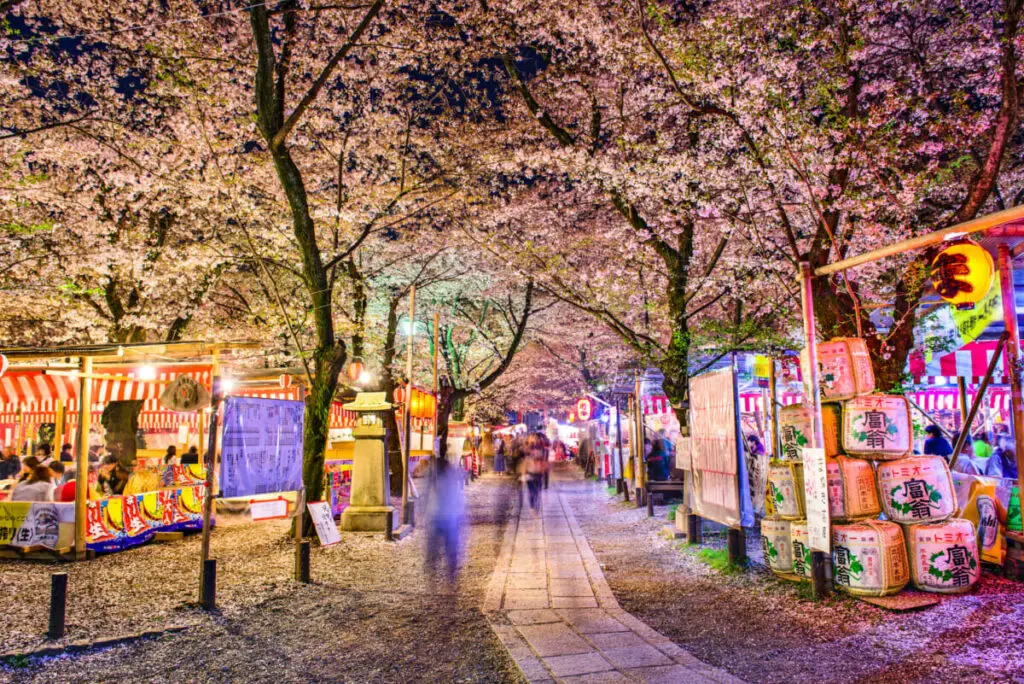
Overall, Kyoto is a beautiful city that has something to offer for everyone. Whether you’re interested in traditional Japanese culture, good food, or just a relaxing walk through the city’s narrow streets, there is sure to be a great spot for you.
With so many great locations to see and things to do, it’s no wonder that Kyoto is a favorite spot for so many tourists from all over the world.
Contact Websites For Each Location:
Kiyomizu-dera Temple: http://www.kiyomizudera.or.jp/en/
Kodaiji Temple: http://www.kodaiji.com/e_index.html
Yasaka Shrine: http://www.yasaka-jinja.or.jp/en/
Gion: http://www.gion.or.jp/
Hanamikoji Street: https://kyoto.travel/en/shopping/area/00018.html
Kamogawa River: https://www.japan.travel/en/spot/1245/
Shijo-dori Street: https://kyoto.travel/en/shopping/area/00007.html
Kyoto Station Building: https://www.kyoto-station-building.com/en/
Traditional Japanese Inns: https://www.japanican.com/en/hotel/list/?area1=JPN_8&area2=JPN_8002
Public Baths: https://www.japan-guide.com/e/e2946.html
Shinto Shrine: https://www.japan-guide.com/e/e3909.html
Kyoto Hotels: https://www.booking.com/city/jp/kyoto.html
Magical Trip: https://www.magical-trip.com/
Arigato Japan: https://arigatojapan.co.jp/
Kyoto Night Foodie Tour: https://www.magical-trip.com/kyoto-tours/kyoto-night-foodie-tour/

